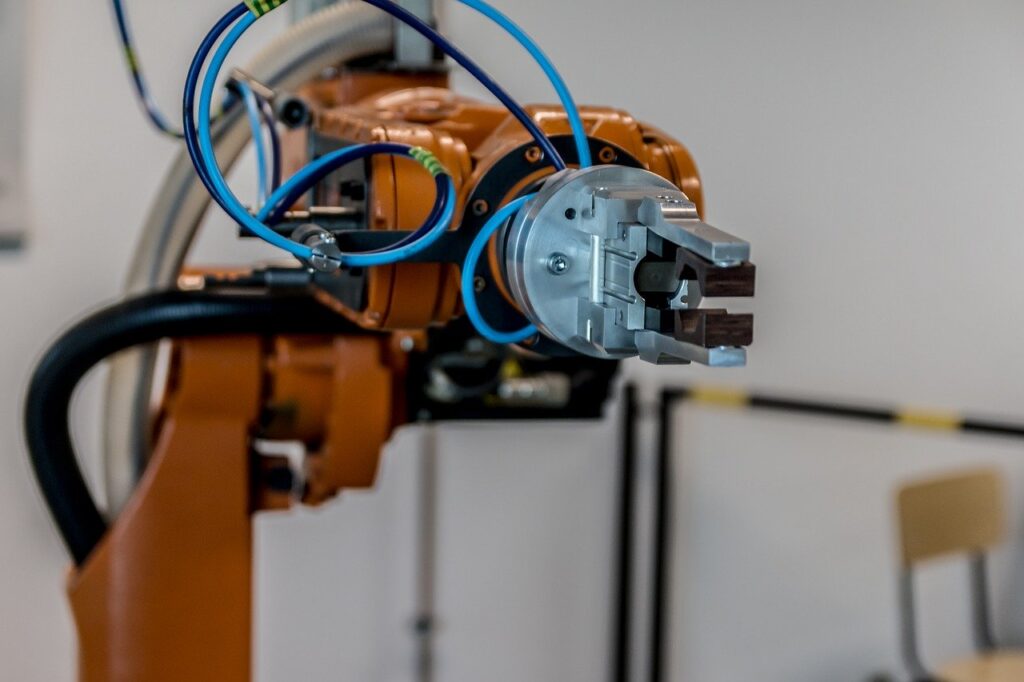

“iPhone manufacturer Foxconn plans to replace almost every human worker with robots: China’s iPhone factories are being automated.” So read the headline at the close of 2016 on the web news site The Verge.[1] All the more remarkable considering that China was supposed to be a source of cheap labour. Either no longer so, or irrelevant. Certainly wages have been rising across China for some years as labour shortages, especially of semi-skilled and skilled workers, kicked in. But maybe irrelevant if the productivity of robots exceeds human effort, for example the ability to be re-programmed every few months as new designs and new electronic components are introduced.
The basis of rising real wages and living standards since 1945 has been largely explained by growth in productivity. The productivity (P) equation looked something like this:
P =f(L+K+T) where productivity has been a function of labour inputs (L), capital inputs (K) and technological change (T) that autonomously raises the productivity of both. Economists call this Total Factor Productivity or TFP. The productivity of L and K have other influences as well. A better educated workforce, a motivated workforce, and well-managed use of labour all contribute to productivity, but so does the use of computers, power tools, and the like. There are even externalities, such as efficient transportation systems. Workers turning up late or tired due to lengthy journeys to work will be less productive. At the turn of the nineteenth century, laws reducing the length of the working day from 12, 14 or even 16 hours to 8 or 10 hours resulted in a more productive workforce.
Similarly with capital. A better use of machinery, a more efficient workflow, regular repair and maintenance, will all help to increase output by more than investment. But when all is said and done, the long-term driving force of productivity has been improved technologies which reduce the L and K required to produce a given level of output or service, or to increase its quality and therefore its value.
However, the statistics show that productivity in the world’s leading economies, from the USA to the EU to Japan and to China, has been in decline. In the US ‘GDP per hour’ was at its highest 1948-73, then dipped until the mid-1990s, then recovered until a decade ago. Since then it has slumped to an all-time low. There is plenty of debate as to how far this is a measurement problem and how far it is a material one brought on by a lack of investment in productive activity, but the stagnation in worker incomes across most industrial countries suggests it’s real. Either that, or the economic policies of neo-liberalism have swung the distribution of income far towards the rentier classes, that is, those who live off property and asset incomes.
Both explanations appear to have validity. However, the march of the robots, enhanced by artificial intelligence (AI), suggests a longer-term challenge. Of course, the fears that automation will replace workers and result in mass unemployment have been around for a very long time; Fritz Lang’s 1927 silent movie Metropolis is a standout example. To these fears, the economist’s answer is always the same: automation releases labour and capital that can be redeployed elsewhere.
However, during periods of stagnation or recession, there are two problems. First, new jobs are not being created. Second, even if they were, the redundant workers would not be a good fit for them. Economists invented a description of capital as “putty” to build into their models, which is a convenient assumption that capital that can be remoulded between different industries with little or no friction. The retraining of workers isn’t quite the same thing. Machines can be sold as scrap and the money recirculated. A ‘scrapped’ worker is a lost soul.
The implications are obvious–if not recognised–for US President-Elect Trump’s quest to “make America great again” by giving tax-incentives to companies who “bring back the jobs” that went overseas. “Bring back the robots” might become more apposite. President Obama had adopted a different, more pro-labour approach. In ‘Artificial Intelligence, Automation and the Economy’ (December 2016),[2] the White House argued for raising the minimum wage, strengthening union bargaining powers, providing cheaper housing to improve labour mobility, shifting taxes from labour to capital, and massively funding retraining and education programmes. There is clearly little chance of those policies being pursued in Republican America.
For the past decade or so, the shift to China has been seen as the cause of depressed wages and loss of jobs in the OECD countries. In reality, this is only a problem if there are not even more productive jobs to replace them. But given the long-term redistribution of incomes and wealth from labour, and to a lesser extent from capital with declining rates of profit on industrial investment, to the rentier elite, policies are required to reimburse the losers. The simplest way is to offer a basic living income to all members of society, and claw back in taxes from those who do not need it.
The advantages are threefold: it will lift hundreds of millions of people out of poverty, it is easy and cost-effective to administer, and it will help revive the economy. Its weakness is that it sounds like paying people to stay out of work. But if low-paid and semi-skilled jobs can be done by robots more efficiently and at zero wages, then shouldn’t the focus of debate shift towards how to distribute the benefits to compensate the losers? And in the longer term, shouldn’t it shift towards how to replace paid work for humans with recreation? One day intelligent robots will consider us crazy not to.
[1] https://www.theverge.com/2016/12/30/14128870/foxconn-robots-automation-apple-iphone-china-manufacturing
[2] https://www.whitehouse.gov/blog/2016/12/20/artificial-intelligence-automation-and-economy